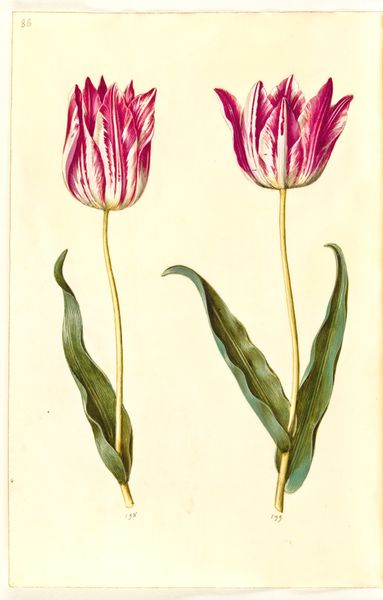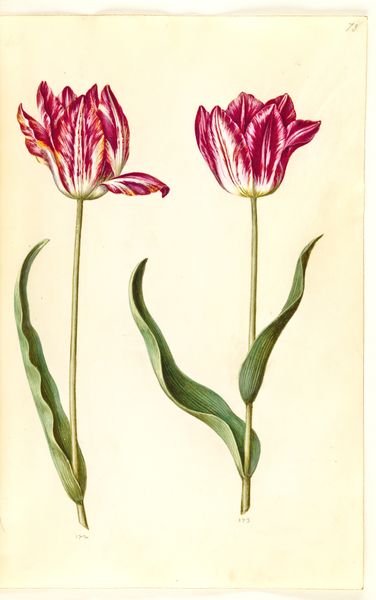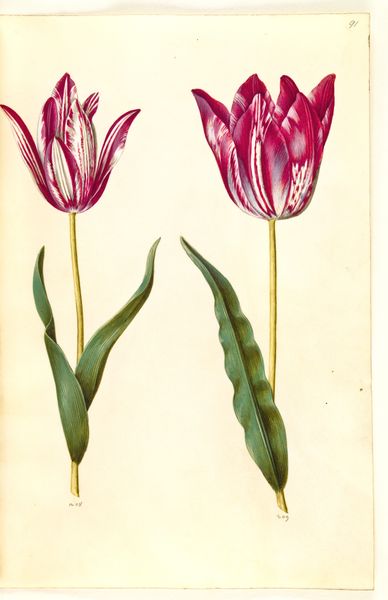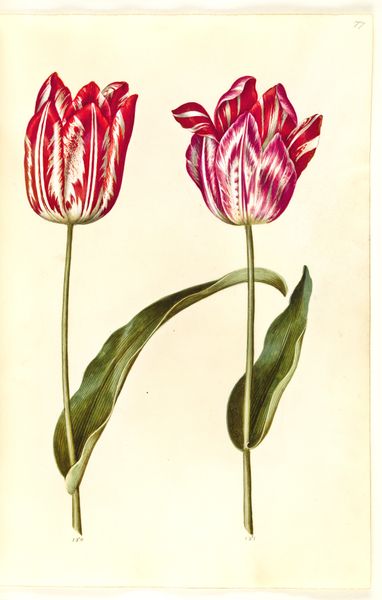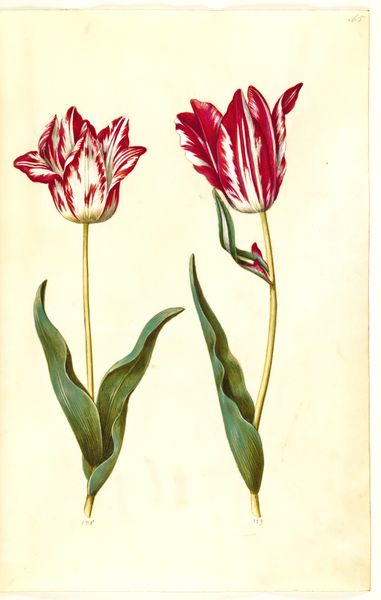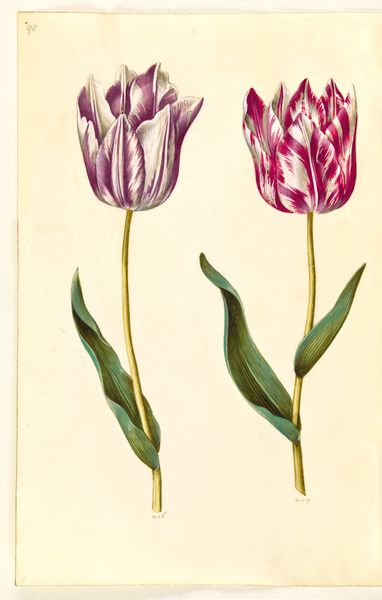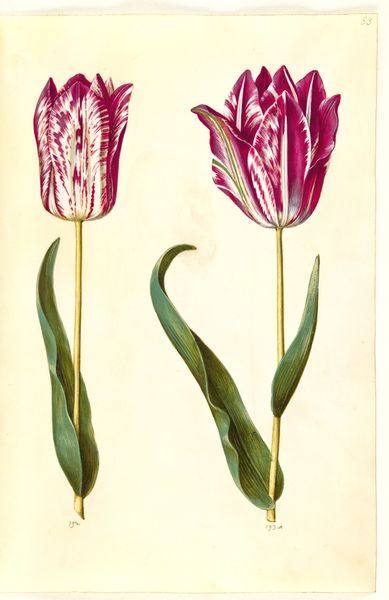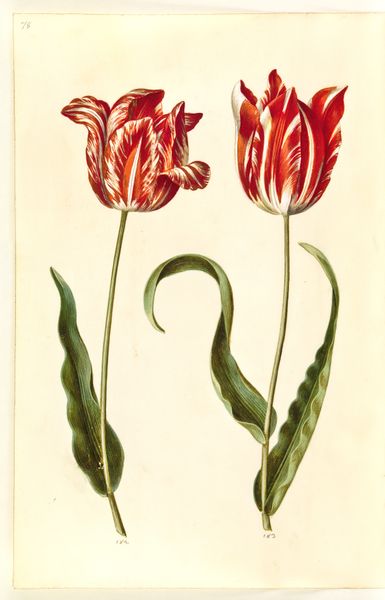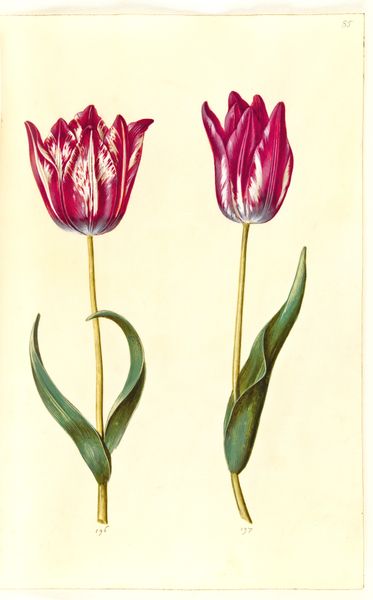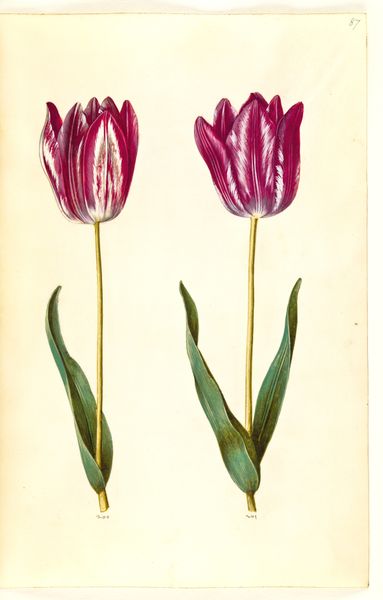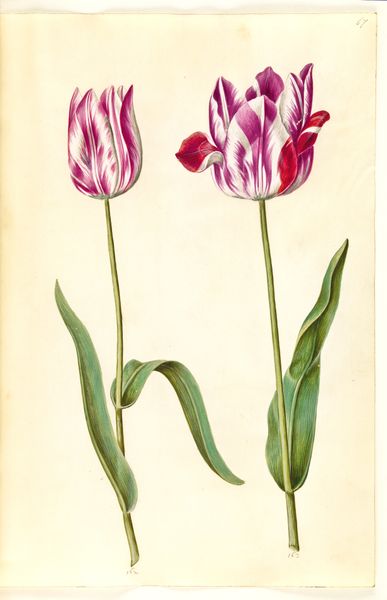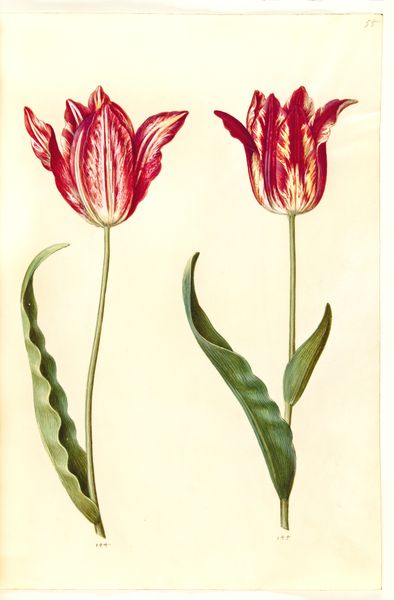
drawing, gouache
#
vegetal
#
drawing
#
red and green
#
childish illustration
#
egg art
#
gouache
#
food illustration
#
botanical photography
#
botanical drawing
#
watercolour illustration
#
munch-inspired
#
botanical art
Dimensions: 375 mm (height) x 265 mm (width) x 85 mm (depth) (monteringsmaal), 358 mm (height) x 250 mm (width) (bladmaal)
Hans Simon Holtzbecker painted this image of Tulipa gesneriana, or the have-tulipan, with watercolour and gouache on paper. Although undated, it was likely made in the mid-17th century. At this time, the Dutch Republic was gripped by “tulip mania” when speculation in tulip bulbs drove prices to extraordinary levels before dramatically collapsing in 1637. The tulip had become a potent symbol of social status and financial success. Holtzbecker worked as a botanical artist, commissioned to document the prized collections of wealthy merchants and aristocrats in the city of Hamburg. These images served as records of their owners’ wealth and good taste, and they also contributed to the scientific understanding of the natural world. By studying estate inventories, guild records, and other historical documents, we can reveal the complex interplay of art, science, and commerce in the Dutch Golden Age, and understand the significance of images such as this.
Comments
No comments
Be the first to comment and join the conversation on the ultimate creative platform.
